20 Powerful Omega-3 Foods That Your Body so Desperately Craves
Including omega 3 foods in your diet is more important than you might think. You see, so many of our bodily functions depend on omega-3 fatty acids as we cannot synthesize omega-3 fatty acids from scratch.
In other words, our body needs help and can get it from certain types of foods high in omega-3.
The Most Important Omega-3 Fatty Acids Your Body Desperately Craves are EPA and DHA Which Are the Pearls of the Sea
In the food that we eat, there are overall two types of omega-3 fatty acids:
- From fish and shellfish, we can benefit from what is called long-chain omega-3 fatty acids. These fatty acids are called EPA (eicosapentaenoic acid) and DHA (docosahexaenoic acid).
- From plants, seeds and nuts, we find short-chain omega-3 fatty acids like alpha-linolenic acid (ALA).
All these fatty acids are beneficial – however, some have higher and more potent health benefits than others.
EPA and DHA – which are fatty acids found in seafood primarily fish and fish oil – are simply more desired by your body that ALA.
In this way you will have to eat a lot more seeds, nuts and vegetables in order to get the same health benefits as you may gain from fish sources. (reference).
Fortunately, your body is clever and is able to convert ALA into EPA and DHA but unfortunately the conversion process is not that efficient. Thus it is much easier to get EPA and DHA directly from the food… or the sea… fish, shellfish or algae.
This doesn’t mean discarding omega 3 foods like plants, seeds and nuts altogether just because they ‘only’ contain ALA. Besides containing other very important nutrients – it is recommended that you actually do get a mixture of all the omega-3 fatty acids.
Medical health specialists recommend an EPA and DHA intake of 250-500 mg per day. However, if you have heart problems, the recommendations may be up to about 1000 mg per day plus eating fish two times a week.
In this article I will present you with a chart of the foods highest in omega 3 along with a list where you can read more about the foods (vitamin content etc.) afterwards.
The Omega-3 Food Chart
Fatty Cold Water Fish Are Generally High in Omega-3 Fatty Acids
All fish contain some level of omega-3, however, and not surprisingly, some species more than others.
There are certain factors that you may use as a rule of thumb to determine the concentration of omega-3 in fish namely: environment, water coldness / depth and level of fat in the fish.
In this way, the fish that forage, are fatty, live in deep, cold waters are typically the ones with the highest amount of omega-3 in their flesh.
However, also some whitefish that are less fatty like cod or pollock are good sources of omega-3 but still typically not as high as the ones mentioned in the list below.
There are however, some pitfalls regarding fish that are important to be aware of. Some predatory fish that you find high up the food chain such as e.g. tuna, swordfish and shark are high in omega-3 content BUT also high in heavy metals such as mercury, nickel and lead which means that intake of these should be limited and particularly restricted for pregnant women and children.
When it comes to preparing the fish, you might want to go easy on the delicious frying option as that tends to destroy the precious omega-3 fatty acids. Sorry about your crispy fried fish and chips!
1) Anchovies
 These small greenish, silvery guys are plentiful in saltwaters all over the world and contain very high concentrations of omega-3. And on the plus side too, The Natural Resources Defense Council has declared that anchovies are the ‘cleanest’ fish containing the least amount of mercury.
These small greenish, silvery guys are plentiful in saltwaters all over the world and contain very high concentrations of omega-3. And on the plus side too, The Natural Resources Defense Council has declared that anchovies are the ‘cleanest’ fish containing the least amount of mercury.
2) Salmon (Wild)
 Besides being high in omega-3 the oily, fatty salmon is very rich in protein and vitamin D along with the good type of cholesterol (HDL).
Besides being high in omega-3 the oily, fatty salmon is very rich in protein and vitamin D along with the good type of cholesterol (HDL).
Typically salmon are born in fresh water but end up in the big oceans such as the North Atlantic and the Pacific ocean.
If you want the highest amount of omega-3 in your salmon and avoid as many dioxins as possible, you need to go for wild caught salmon rather farmed salmon.
3) Mackerel
 Mackerel as omega 3 foods is also very high in omega-3 fatty acids.
Mackerel as omega 3 foods is also very high in omega-3 fatty acids.
As a species there is great variety in the fish both in terms of where it lives and in terms of size.
This also means that the level of mercury varies greatly – for instance it is not recommended that children and pregnant women eat the large king mackerel.
4) Herring
 Herring, a delicacy in Scandinavia (in Northern Europe) where it is eaten in many different ways (raw and pickled on dark rye bread is one preferred way to eat it).
Herring, a delicacy in Scandinavia (in Northern Europe) where it is eaten in many different ways (raw and pickled on dark rye bread is one preferred way to eat it).
Like anchovies, and small mackerel, the herring, is a forage fish. It lives primarily in the North Pacific and North Atlantic Ocean. Herring is also a very rich omega 3 source plus is has a high vitamin D content which is also craved by the vikings of the North during glum winters.
5) Tuna
 Tuna is a very popular saltwater fish with high amounts of omega-3 and protein.
Tuna is a very popular saltwater fish with high amounts of omega-3 and protein.
Tuna, however, has to consumed with caution as it is also a fish that may contain relatively high amounts of heavy metals – however, the amount may very greatly. In general the larger the tuna, the higher the risk of high mercury content.
In this way when you eat canned tuna, it is not irrelevant which kind of tuna it contains: you want to go with canned tuna that contain small tuna (skipjack) rather than canned white tuna (albacore) that may have mercury level up to 3 times higher than its smaller cousins.
6) Whitefish
 Whitefish refers to several types of fish that live near the bottom of the sea or lake. Whitefish that are also a good source of omega-3 are e.g. cod and pollock.
Whitefish refers to several types of fish that live near the bottom of the sea or lake. Whitefish that are also a good source of omega-3 are e.g. cod and pollock.
Shellfish Contain Omega-3 But not as much as Fatty, Oily Fish
Phytoplankton are small water plants or algae that lie at the bottom of the sea food chain. And these little fellas are the rich omega-3 food source that many sea animals get their omega-3 supply from.
As you can see in the headline, shellfish do not contain as much omega-3 as the good fatty fish. Some of the best omega-3 shellfish sources are blue crab and oysters but you can also get some from shrimp and lobsters.
7) Oysters
 Some love them, others find them disgusting. Whatever the case, oysters are a great food source of omega-3. Some claim that they are just as omega-3 rich as salmon which as you may know is one of the kings in the omega-3 food dynasty.
Some love them, others find them disgusting. Whatever the case, oysters are a great food source of omega-3. Some claim that they are just as omega-3 rich as salmon which as you may know is one of the kings in the omega-3 food dynasty.
Besides being a great omega-3 food, oysters are rich in vitamin C, zinc and calcium plus it has strong cholesterol lowering properties in that it raises the ‘good cholesterol’ (HDL) and lowers the ‘bad cholesterol’ (LDL).
8) Blue Crab
 These 10 legged Atlantic sea creatures are a fantastic low-fat source of protein plus it contains high amounts of omega-3.
These 10 legged Atlantic sea creatures are a fantastic low-fat source of protein plus it contains high amounts of omega-3.
Like their seashell cousins, oysters, they are also rich in calcium and zinc.
9) Shrimps
 Despite being recommended avoided for people with cholesterol concerns, these small wonders also contain the healthy omega-3 fatty acids EPA and DHA plus the difficult obtainable vitamin B12. Also it is the seafood richest in copper.
Despite being recommended avoided for people with cholesterol concerns, these small wonders also contain the healthy omega-3 fatty acids EPA and DHA plus the difficult obtainable vitamin B12. Also it is the seafood richest in copper.
The only thing shrimps haven’t got going for them is their high cholesterol content.
Other Surprisingly Powerful Omega-3 Meat Sources
10) Beef
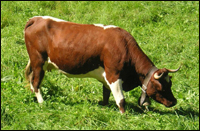 Good news for beef lovers. Yes, believe it or not. Beef MAY contain a good amount of omega-3.
Good news for beef lovers. Yes, believe it or not. Beef MAY contain a good amount of omega-3.
However, the meat does need to be beef from grass feed cows (cows that have fun on pastures all year long) and not from cows that have been given processed food.
So look for ‘100% grass fed’ when you read the label in the supermarket. (reference).
Seeds and Nuts – Extremely High Omega-3 (ALA) Content
As mentioned seeds and nuts do not contain the best omega-3 acids, DHA or EPA, but they do have ALA which you do need – plus they are rich in so many other ways as they contain important fibers and protein along with many crucial vitamins.
11) Flaxseed / Linseed
 Along with hemp, flax is one of richest vegetable omega-3 sources. In fact it is THE HIGEST food source in omega-3. But remember as this is a plant source, we are speaking of ALA and not the more desired omega-3 fatty acids of DHA and EPA that you find in seafood.
Along with hemp, flax is one of richest vegetable omega-3 sources. In fact it is THE HIGEST food source in omega-3. But remember as this is a plant source, we are speaking of ALA and not the more desired omega-3 fatty acids of DHA and EPA that you find in seafood.
Flax is a fiber crop that is both food but also used to make clothes. You probably know flax in its oil version which also called linseed oil.
Your question may be then, okay flax seems healthy but how do I incorporate it into my diet?
Fortunately recent studies have shown that the ALA omega-3 fatty acisd in flaxseed are particularly heat resistant which means that you can safely put some flaxseed into your bread or cakes and still benefit from the omega-3.
And interestingly, the addition of flax in bread also has the great benefit of lowering the glycemic index.
12) Hemp seeds
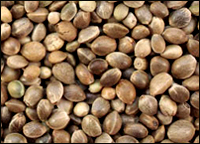 No, these little fellas won’t get you high. They are not marijuana – they’re a completely different plant. Related, but not the same. Hemp will get you lots of nutrients though.
No, these little fellas won’t get you high. They are not marijuana – they’re a completely different plant. Related, but not the same. Hemp will get you lots of nutrients though.
Inside the hard seeds of hemp you’ll find the kernel which is packed with omega-3 along with protein and amino acids. So sprinkle some of these health boosters into your smoothie or cereal. You wont regret it.
From hemp seeds you can also get hemp seed oil. But you want to use it in dressings or simply directly on salads as heat in the frying process will destroy omega-3.
So the use of flaxseeds and hemp are not the same – flaxseeds can be heated, hemp cannot.
13) Chia Seeds
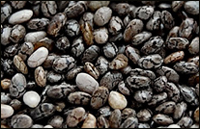 Chia seeds are fairly unknown but apparently very healthy: Some are so enthusiastic that they have named it a new superfood. However, some are also more sceptical when it comes to the benefits of chia and say that despite it’s high omega-3 content, it has serious drawbacks.
Chia seeds are fairly unknown but apparently very healthy: Some are so enthusiastic that they have named it a new superfood. However, some are also more sceptical when it comes to the benefits of chia and say that despite it’s high omega-3 content, it has serious drawbacks.
Chia is native to South America and was a cherished food by the ancient Aztec and Maya people.
These small black beauties are not only high in fiber, antioxidants, zinc, vitamin B1 and B2 but also in omega-3.
Like other seeds they can be added to smoothies, porridge or sprinkled on your cereal.
14) Walnuts (English)
 Walnuts, those small weird brain looking nuts are surprisingly high in omega-3 thus being good omega-3 foods.
Walnuts, those small weird brain looking nuts are surprisingly high in omega-3 thus being good omega-3 foods.
Also besides being rich in vitamin E (great for heart problems), it is also high in healthy phenols … but only if you leave the skin on. Yes, even though it has a slight bitterness, the skin is a health treasure.
Walnuts are great as healthy snacks in themselves but you cal also chop them up and use them in salads or desserts.
Vegetables and Legumes: The Moderate Omega-3 (ALA) Sources
Some vegetables are also good omega-3 sources. Not as rich as seafood or seeds but still definitely worth going for.
As a general rule of thumb, you don’t want to cook your vegetables too much as they not only become mushy but also lose many of their nutritional qualities.
15) Beans – Soy in Particular
 Beans are an excellent omega-3 source. Particularly soybeans but also navy beans and kidney beans contain omega-3.
Beans are an excellent omega-3 source. Particularly soybeans but also navy beans and kidney beans contain omega-3.
Besides being a great vegetable protein source, soybeans are also high in iron, fiber, vitamin B2, magnesium and vitamin K.
As you may already be aware of, there has been much debate about potential side effects of high soybean consumption. However, it is not the purpose of this article to go into that. If you want to know more about that, you can read about it here.
16) Tofu
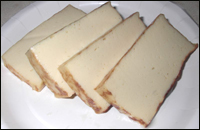 Made from soybeans tofu is also an excellent omega-3 food. Tofu is made from curdling soymilk which is then pressed into a form of ‘cake’ that you can slice.
Made from soybeans tofu is also an excellent omega-3 food. Tofu is made from curdling soymilk which is then pressed into a form of ‘cake’ that you can slice.
Also like other other soy products, tofu is a good cancer fighter – and apparently tofu is an even fiercer cancer warrior than plain soy. And fermented soy is also healthier than non-fermented soy.
17) Broccoli
 Besides being a great cholesterol lowering food source, broccoli is high in vitamin K and C but also high in vitamin D which our body craves during winter time in colder parts of the globe.
Besides being a great cholesterol lowering food source, broccoli is high in vitamin K and C but also high in vitamin D which our body craves during winter time in colder parts of the globe.
While the omega-3 content is not that high, it is still worth considering as an important omega-3 food source. The ALA omega-3 in broccoli also have anti-inflammatory benefits.
18) Cauliflower
 Like broccoli, cauliflower is one of the cruciferous vegetables that you want to include in your diet as much as possible.
Like broccoli, cauliflower is one of the cruciferous vegetables that you want to include in your diet as much as possible.
Besides being a good source of vitamin C and K and omega-3, cauliflower has been linked with cancer prevention. Like broccoli, cauliflower also has great anti-inflammatory properties.
19) Brussel Sprouts
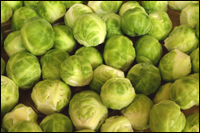 Even though brussel sprouts are an acquired taste, they are extremely healthy.
Even though brussel sprouts are an acquired taste, they are extremely healthy.
Being extremely rich in vitamin K and C, unique in their DNA protection, they are also a great omega-3 food source.
A good tip is to remember not to overcook them – not only will they start to smell sulfur-ish, they also lose much of their nutritional impact.
20) Spinach
 This powerhouse of a vegetable is rich in the antioxidants that aim to protect our DNA, plus vitamin A and K, magnesium and not to forget omega 3.
This powerhouse of a vegetable is rich in the antioxidants that aim to protect our DNA, plus vitamin A and K, magnesium and not to forget omega 3.
What Would You Like to Read Now?
21 Powerful Omega-3 Benefits That Improve Heart Health, Inflammation Diseases, Insulin Resistance, Bone Strength, Psychological Ailments and Infant Health
Omega-3 Supplements Guide to Buying and Consuming Fish Oil
Go to the top of this article about 20 Powerful Omega 3 Foods That Your Body so Desperately Craves
Go to the homepage Best Fish Oil Benefits and Supplements

